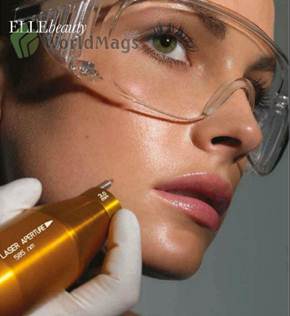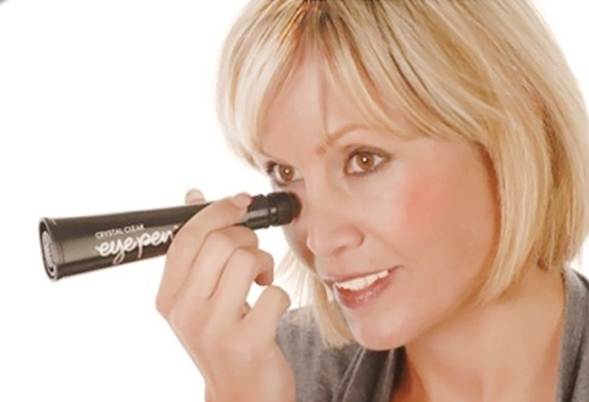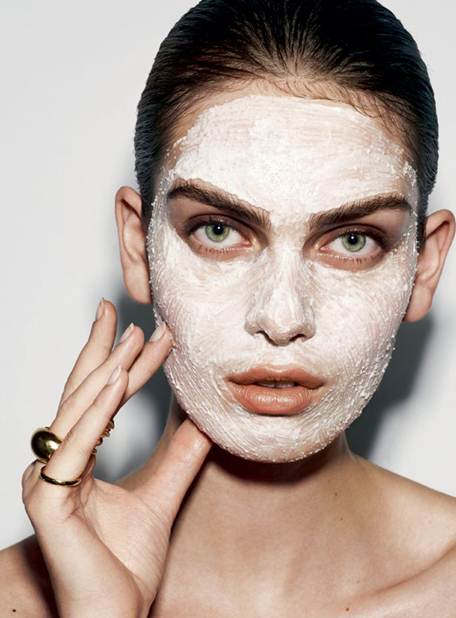We investigate the de-ageing
Alternatives to going under the knife
In the quest to undo the signs of time on
their appearance, women are ironically turning to procedures that require ever
less time to perform and to recover from. And, says Jo'burg-based cosmetic
surgeon Dr Loredana Nigro, this is done at 'an earlier age to manage ageing in
the most graceful way possible'.

Sarah
Koopman investigates the de-ageing Alternatives to going under the knife
Until now, most anti-ageing treatments have
taken the form of fillers that aim to restore the skin’s volume and firmness. Botox
that freezes the muscles under-neath the skin to stop them from moving and
causing wrinkles and light or laser treatments that tighten and smooth and
brighten the appearance of skin. These treatments, which mostly act on the
skin's upper layers, gained popularity for delaying more invasive procedures
such as surgical facelifts as well as for their almost immediate results.
What these procedures on the upper layers
of the skin cannot do effectively is treat the delicate eye and neck areas,
making surgery the only option. It is this gap that new treatments are filling:
de-ageing treatments that propose to reverse the appearance of ageing skin by
resurfacing it instead of freezing the ageing process with the concomitant
telltale 'tight' look of facial surgery. 'The focus has shifted from pure
damage control to prevention,' says Nigro of this new approach.
How It Works
Many of the new treatments make use of
laser and light therapy that in effect causes heat damage to the skin and
collagen cells, thereby triggering collagen's natural repair response. Because
the new collagen is thicker and firmer, the result is tighter skin. 'Active
collagen-building essentially builds up the skin, retarding ongoing ageing,'
explains Nigro.
Now this same treatment is being used under
the skin with promises of even greater firming effects. Whereas laser and
radiofrequency treatments penetrate skin for no deeper than four millimeters,
thus tightening skin on the surface only, these new methods work two
centimeters below the skin’s surface, enabling doctors to target previously
untreatable sagging skin and reducing the need for surgical intervention.
Patients are therefore able to undergo extensive skin resurfacing with real
results and with little recovery time and no scarring. As these procedures take
place in the doctor's chair, they are done under local anesthetic, which also
speeds up recovery time.

No
Surgery Required
Basically, when the treatment device made
up of micro-needles, touches the skin, it briefly cools the area before
creating a deep heating sensation that is followed by another cooling
sensation. The feeling of heat indicates that the deeper layers of the skin
have been reached and thermal damage has been induced.
This procedure is not entirely without
downsides though. Side effects include redness, swelling and bruising for a few
weeks after the procedure as well as pain immediately after the anesthetic has
worn off. Itching, blisters and bruising are possible too. 'There is [also the
chance of] negative psychological effects if the procedure does not turn out to
be what [a patient] anticipated,' says Dr Craige Golding, a specialist
physician in anti-ageing medicine.
Not everyone qualifies for these treatments
either, and the severity of the sagging will determine whether or not the
procedure will work for you.
All doctors stress, however, that it is
most important to maintain the youthful condition of your skin from an early
age to keep signs of ageing at bay. 'Don't wait too long,' cautions Nigro. 'It
is easier to look 10 years younger if you're not actually wishing to roll back
[the clock] 20 years'.
Treatment Options
Internationally, de-ageing treatments have
gained popularity with a range of trademarked treatment options. In SA, the two
most popular procedures are Fraxel which, according to Fraxel.com, works for
fine lines and wrinkles, surface scarring, pigmentation, sun damage and actinic
keratosis, a common pre-cancerous skin condition; and Thermage, which Nigro
says ‘uses radiofrequency to build collagen and non-surgically reverse
sagging'.
Cosmetic surgeons suggest a combination of
treatments as the best approach for anti-ageing. 'In reality,' says Nigro,
'anti-ageing and preventative aesthetic treatments can begin as soon as one is
beyond adolescence and continue deep into advanced age.'
While some say the best way to achieve
optimum results is to alternate surgical and non-surgical treatments, thereby
changing the skin's appearance as well as how the muscles and fat in it
operate, others suggest a holistic approach that includes a balanced diet and a
combination of topical treatments. It is important to bear in mind, Golding
says, that skin 'is a living organ and therefore should be under constant
treatment.

Inside Out
'Good nutrition and supplementation, which
should include Omega-3 fatty acids, and staying hydrated are essential for
healthy skin,' says Golding. By incorporating essential vitamins such as
vitamin C in your diet it is possible to assist your skin's anti-ageing
campaign from the inside out. Vitamin C in particular helps to eliminate free
radicals that play a large role in the aged appearance of skin. (See our story
on the benefits of vitamin C overleaf.)
Topical care is vital too. In between any
kind of cosmetic treatment, a thorough skincare regimen is necessary. Serums
and creams that contain hyaluronic acid, an acid naturally present in skin and
that helps with keeping it smooth and soft, are essential for its general
maintenance. Cosmetics ranges such as Elizabeth Arden's Ceramide products and
Revlon’s Age-Defying products stimulate collagen production from the outside
and will assist in delaying the ageing process between treatments. ‘Staying out
of the sun is essential,' says Golding as sun damage is a large contributing
factor in skin's ageing.
While we have all these options available
to us, it is ultimately up to us to determine the best course of action to keep
both ageing and invasive procedures at bay. Collagen holds the key to reversing
the appearance of ageing skin and the best options currently available are
laser and radiofrequency treatments. Whether or not treatments like Fraxel and
Thermage offer any real alternative to facial surgery is determined by how much
excess skin needs to be removed in order to achieve the desired outcome.
De-Ageing As Your skin ages
20S: This is when your skin starts to show
the first signs of ageing with the appearance of fine lines, particularly
around the eyes and the corners of the mouth. From about 25, the collagen in
the skin starts to break down and skin becomes drier as pore size increases.
Develop good skincare habits - include sunscreen in your daily routine, use
creams containing vitamin A and make sure to use a day and a night moisturiser.
Add fruit acids and antioxidants to your diet.
30s: Collagen, elastin and hyaluronic acid
levels continue to drop. Start using vitamin C as a topical antioxidant that
facilitates collagen synthesis and UV protection. Use fruit acids to exfoliate
the top layer of the skin.
40s: The continued decrease in collagen,
elastin and hyaluronic acid causes skin to sag and reduce elasticity. More
prominent lines and wrinkles also start to appear. This is a good time to
consider dermal filler treatments and dermal stimulator treatments. Use
deageing treatments to stimulate collagen repair and combat sagging before the
collagen breaks down too much and skin becomes too saggy to be treated
non-surgically.
